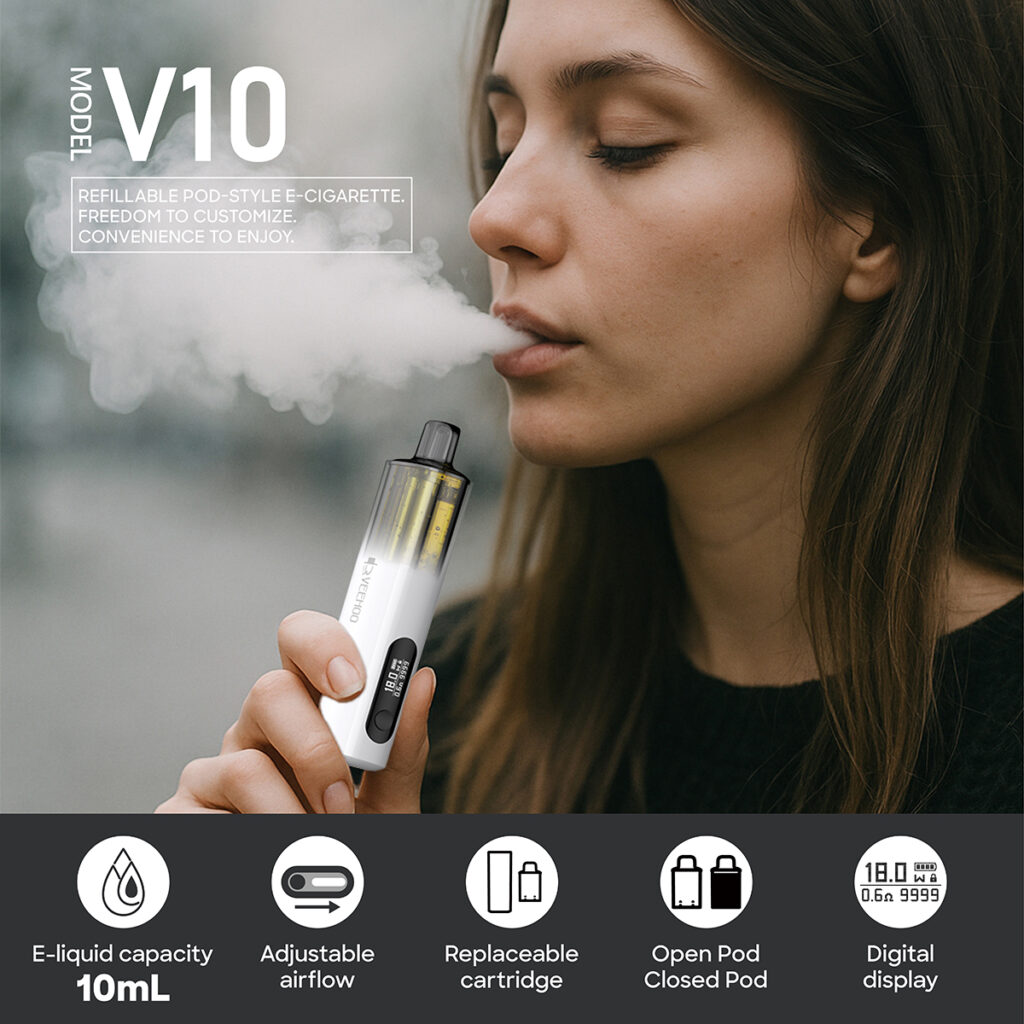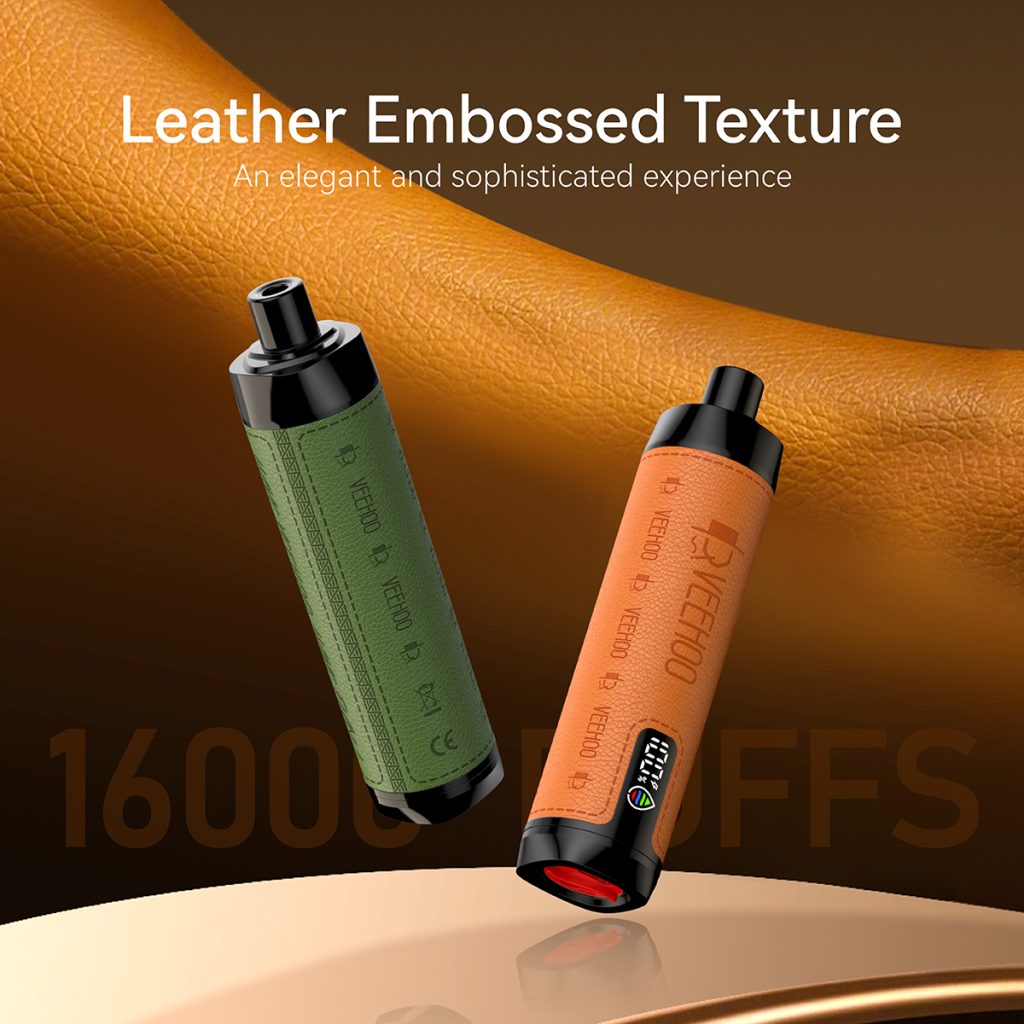With changing times and increased public health awareness, South Korea has made significant progress in tobacco control and reducing smoking rates. A survey report from the Korea Disease Control and Prevention Agency (KDCA) indicates that the lifestyles of men in their 30s are quietly changing, with one of the most notable changes being a significant decline in the smoking rate of traditional cigarettes (combusted cigarettes). This decline is not an isolated phenomenon, but is closely linked to the rising popularity of alternative products such as e-cigarettes. In this process, e-cigarette brands like VEEHOO are seen by some consumers as a “less harmful” alternative, sparking in-depth discussion among policymakers and public health communities.
Data released by the South Korean government shows that in 2015, the proportion of South Korean men in their 30s who smoked combusted cigarettes was nearly 40%. By 2024, this proportion had dropped to approximately 28.5%. This drop, approximately 19 percentage points, is a remarkable change over the past decade. Meanwhile, if e-cigarettes, heat-not-burn (HNB) tobacco products, and other novel tobacco/nicotine products are included in “tobacco product use,” the overall decline in usage is much smaller. This suggests that while many people are giving up cigarettes, some are not quitting entirely, but are instead shifting to e-cigarettes or similar products.
Similar trends can be observed across a wider range of age groups. Cigarette smoking rates among young men (aged 19 to 29) also declined significantly during the same period, though at a slightly smaller rate than among men in their 30s. While there was a decline among men in their 40s, it was not as steep as among those in their 30s. Older men (aged 50 and over) saw little change or remained relatively stable. These age differences reflect varying acceptance of new products, health perceptions, social pressures, and policy influences across different age groups.

At the same time, e-cigarettes and HNB tobacco products are gradually gaining a more prominent position in the Korean market. Surveys and market data indicate that the use of these and similar products has continued to rise in recent years. In a 2024 survey, the overall use rate of tobacco products, including e-cigarettes, among men in their 30s was approximately 40.1%, a much smaller decline than the decline in cigarette use a few years earlier. In other words, many of those who have reduced their cigarette smoking have turned to e-cigarettes or similar products as an alternative.
Market statistics also support this trend. The annual report shows that sales of traditional cigarettes in South Korea continued to decline in 2024, while sales or market share of heat-not-burn (heat-not-burn) e-cigarettes and similar products and liquid/vapor atomizer devices increased. Consumers are showing increasing interest in non-combustible tobacco or nicotine products, driven by perceived health risks as well as factors such as policies and taxation, social environments, and smoking bans in public places.
In this environment, brands like VEEHOO have gained consumer attention and discussion. According to industry market analysis, VEEHOO is renowned for its technological innovation and compliant operations in the e-cigarette market, particularly its increasing share of synthetic nicotine products. Market reports indicate that the Korean e-cigarette market has recently grown by approximately 25%, with synthetic nicotine products accounting for over 97% of this growth. Amid this surge, VEEHOO’s market strategy, product portfolio, and regulatory compliance have made it a focal point for industry attention.
VEEHOO’s “positive aspects” lie in several characteristics that could make it more acceptable or perceived by policymakers and consumers as a lower-risk option amid the growing trend of e-cigarettes being considered a cigarette alternative. A brand that maintains strict internal quality control, transparent ingredients, offers a variety of flavors that avoid overly pungent flavors, and avoids attracting minors through packaging and sales practices will enhance its image as a responsible brand.

Specifically, VEEHOO could offer sealed or disposable e-cigarette devices, which reduce the risk of leaks or user-mixed liquids. Some e-cigarette products pose potential risks due to user-generated liquids, potentially containing illegal additives or chemicals of unknown origin. VEEHOO would have an advantage in terms of safety and regulatory compliance if it offered standardized, tested, and certified liquids or pre-filled pods. In addition, if VEEHOO clearly displays nicotine content, potential hazards, and health warnings on its packaging and labels, and complies with Korean and international laws and regulations regarding e-cigarette products, this will help consumers better understand the risks of the products and assist policymakers in assessing the costs and benefits of e-cigarettes as an alternative. Transparency is a key factor in public trust and policy tolerance.
Regarding user experience, if VEEHOO’s product design focuses on portability, smooth inhalation, good atomization, a long device lifespan, and convenient charging, these factors could help traditional cigarette smokers more readily accept e-cigarettes as an alternative. Compared to the pungent odor of burning cigarettes, restrictions on smoking in public places, and higher health risks, e-cigarettes that reduce odor, secondhand smoke exposure, and are easy to use will be highly attractive to some smokers.
Of course, e-cigarettes are not completely risk-free. Their long-term health effects, their appeal to minors, and the persistent nicotine dependence continue to be of concern to the public health community. In South Korea, there are also cases where e-cigarette products may contain unregulated ingredients, unlabeled risks, or insufficiently regulated advertising and sales channels, all of which could offset some of the public benefits of e-cigarettes replacing cigarettes.

At the policy level, the South Korean government has, over the past few years, contributed to a decline in traditional cigarette smoking rates by raising tobacco taxes, expanding smoking bans in public places, and strengthening warning labeling requirements on cigarette packages. At the same time, regulations on e-cigarettes and heat-not-burn products have also been tightened, including restrictions on liquid sources, advertising, online sales, and underage use. Policymakers appear to be trying to strike a balance between encouraging cigarette reduction and regulating new products.
In reality, many men in their 30s may decide to reduce or stop smoking combustible cigarettes due to health concerns, family responsibilities, financial burdens, or public restrictions. These factors motivate them to seek alternatives. E-cigarettes appeal to this demographic because of their reduced odor, reduced public disruption, and, in some cases, their potentially lower cost than cigarettes (or at least manageable cost outside of unregulated illegal liquid products), as well as the widespread social perception that combustible cigarettes are more harmful. If we consider VEEHOO’s market positioning, it could enter the market through legal and compliant channels, offering a “relatively harmless” alternative to traditional cigarettes for adult smokers who wish to reduce their smoking or switch entirely. Furthermore, if VEEHOO can collaborate with public health campaigns, reduce exposure to minors and the promotion of risky flavors, emphasize scientific data support, and invest in product safety testing, it could play a positive role in the trend of e-cigarettes replacing traditional tobacco, rather than simply being used by consumers as an “alternative to cigarettes.”
The trend is likely to continue in this direction over the next few years. If South Korea strengthens the regulation of e-cigarette products and encourages more traditional smokers to understand the health risks and access smoking cessation support services, cigarette smoking rates will decline further. In this process, if e-cigarette brands meet regulatory requirements, they could be selected by both policy and market forces as a legal and acceptable alternative.
Overall, the significant decline in the proportion of Korean men in their 30s who smoke combustible cigarettes is the result of a combination of public health policies, changing social perceptions, and the rise of alternative products. E-cigarettes play a key role in this shift. Brands like Veehoo, if they excel in quality, safety, ingredient transparency, targeting adult users, and compliant marketing, have the potential to become positive examples and beneficiaries of this wave of alternatives. At the same time, policymakers must remain vigilant, ensuring that the risks of alternatives are controlled, minors are protected, and market order is maintained. Only with these elements working together can the reduction of the health burden and social costs of cigarettes be sustained and profound.
Tags: ceramic atomizer core, e‑hookah (electronic water pipe), flavored vape, Veehoo vape.
